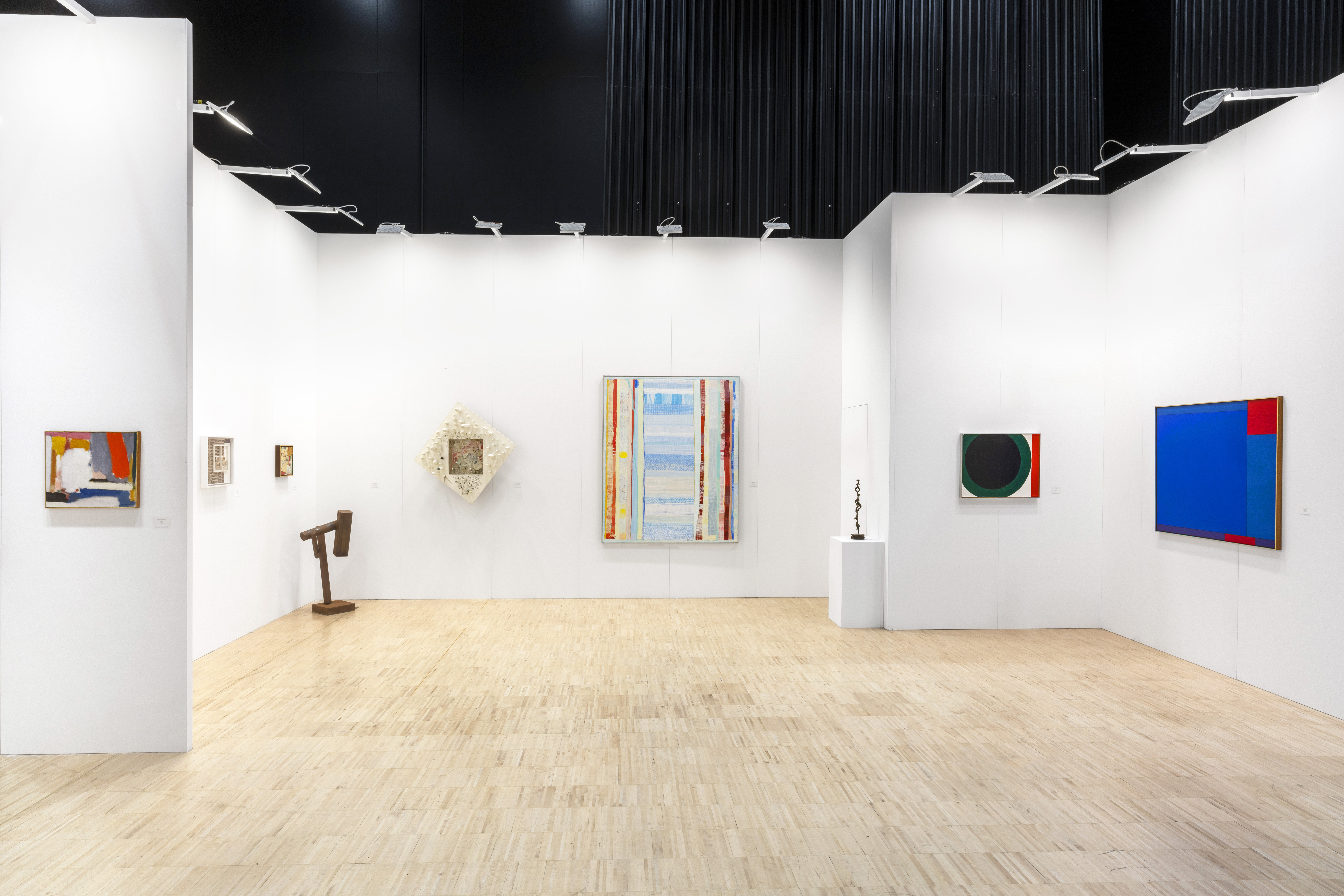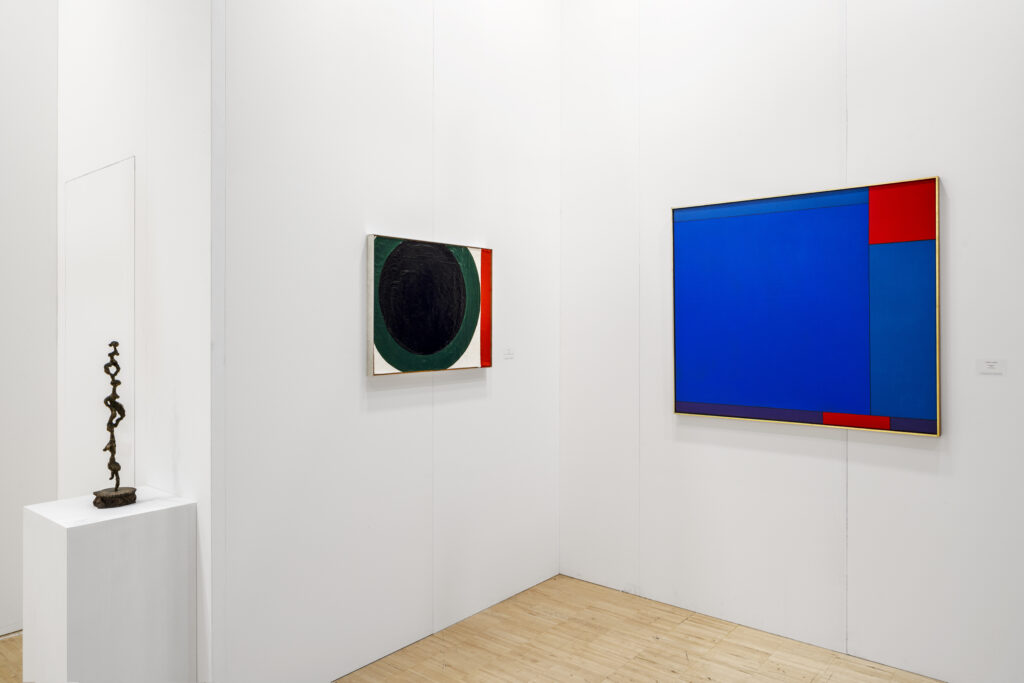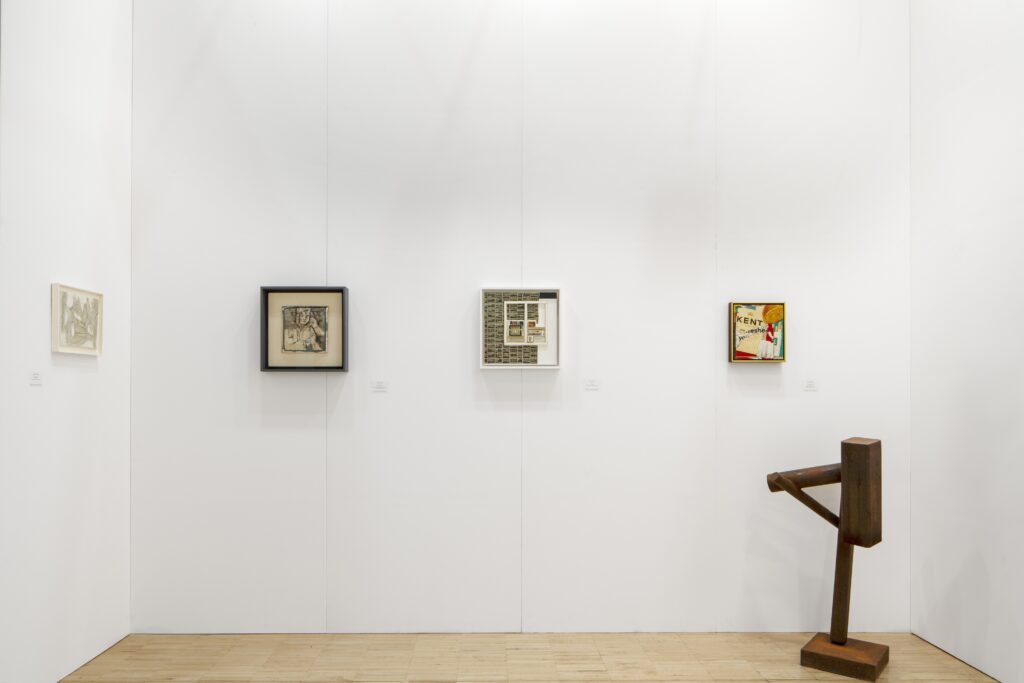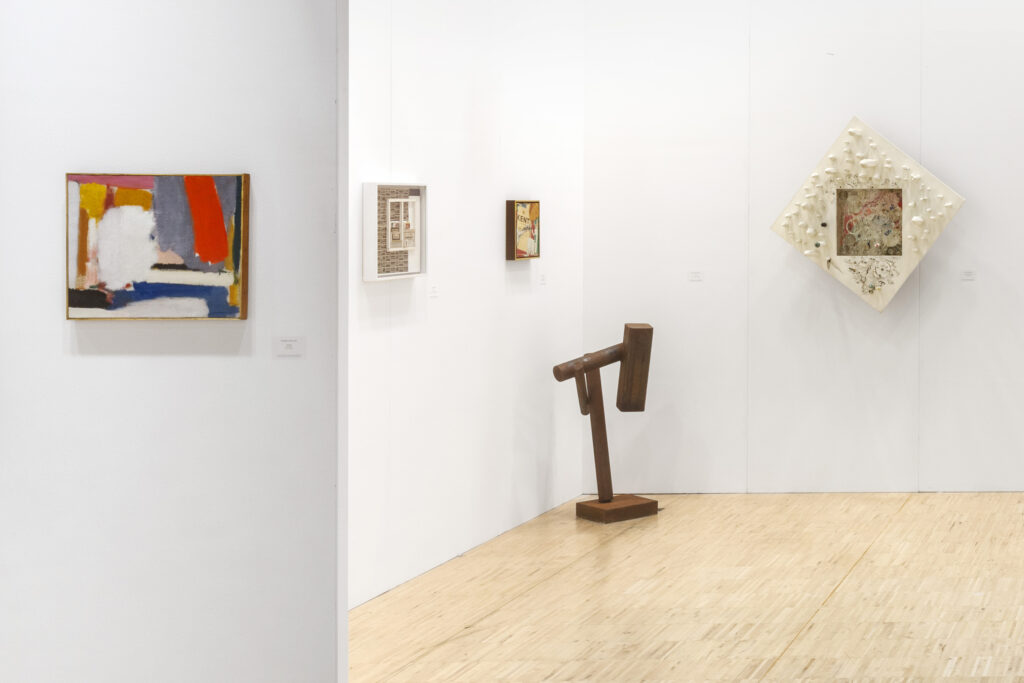ROMA ARTE IN NUVOLA 2024
EXPLORING NEW YORK’S POSTWAR ART SCENE
The postwar art scene in New York City marked a transformative era in the history of modern art, establishing the city as the new epicenter of the global art world. Following World War II, a wave of artists flocked to New York, drawn by its energy, cultural diversity, and promise of innovation. This period saw the emergence of groundbreaking movements like Lyrical Abstraction, Abstract Expressionism and Color Field Painting.
The city also became a hub for experimentation beyond abstraction, as movements like Pop Art, Minimalism, and Conceptual Art took root in the 1950s and 1960s and the vibrant gallery scene, including spaces like Peggy Guggenheim’s Art of This Century, Betty Parsons Gallery, and later Leo Castelli Gallery, provided crucial platforms for emerging talent.
EXPLORE OUR BOOTH AT ROMA ARTE IN NUVOLA 2024
The gallery’s project at Roma Arte in Nuvola 2024 brings together a powerful selection of artists who were pivotal to the New York art scene after World War II. This collection showcases works from eleven influential figures whose styles range from abstract painting to mixed-media sculpture, reflecting the energy and innovation that defined their era.
FEATURED ARTISTS :
Mary Bauermeister, Giorgio Cavallon, Tony Berlant, Al Held, Ray Johnson, Robert Natkin, Beverly Pepper, Larry Rivers, Ludwig Sander, Angelo Savelli, Richard Stankiewicz
ELEVEN ARTISTS
Mary Bauermeister’s optical lens box “Absolute Master piece/peace” engage the viewer’s senses with layered glass, shaped wood and text that challenge how we perceive reality, creating a mesmerizing interplay of depth and meaning.
Robert Natkin’s vivid abstract painting “Apollo“, rich in color and dynamic rhythm, evoke deep emotional resonance.
Beverly Pepper’s sculpture use bronze to convey strength and resilience, offering a powerful testament to the fusion of modernity and nature.
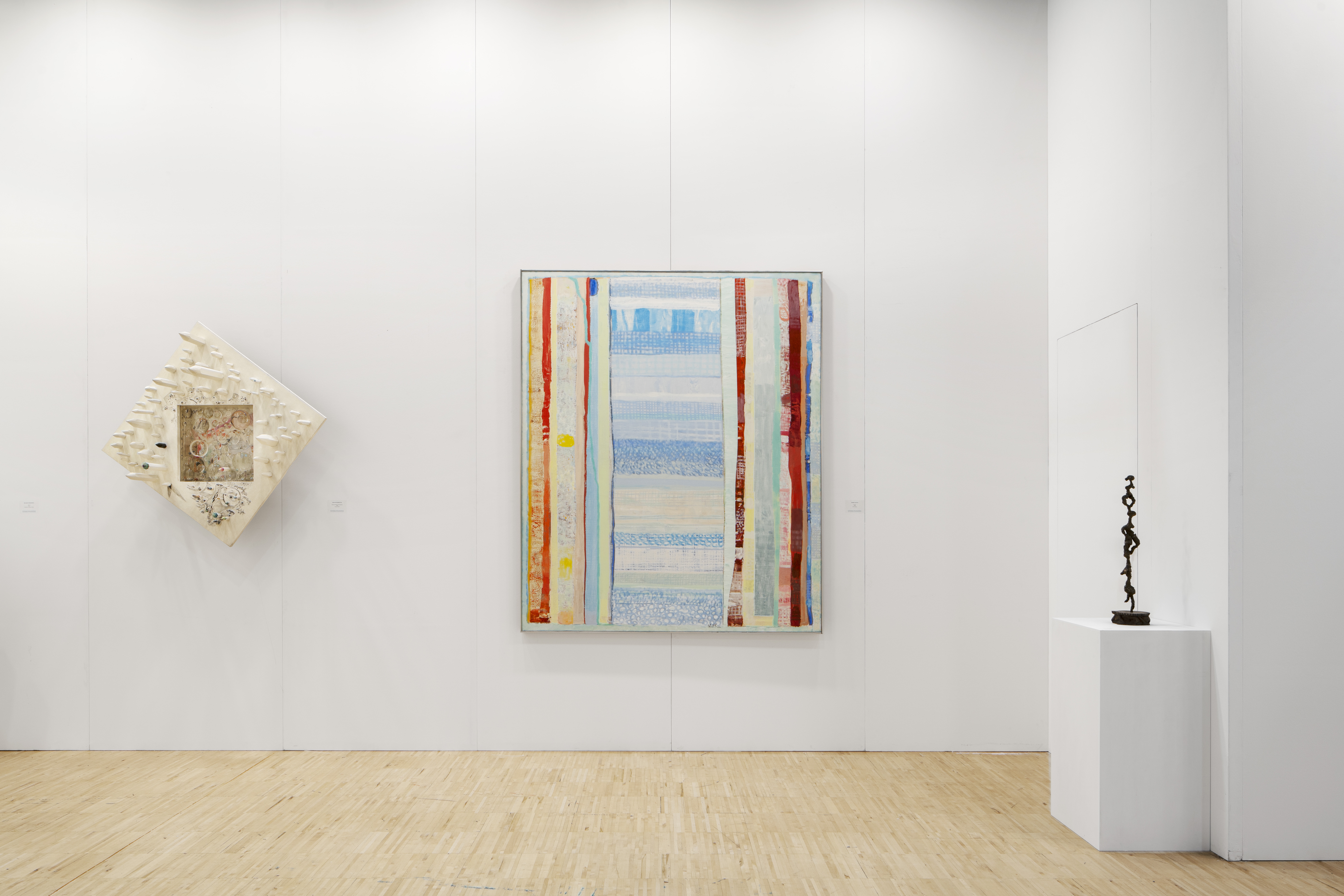
Mary Bauermeister, Robert Natkin and Beverly Pepper
Giorgio Cavallon approaches abstraction with a lyrical sensitivity, emphasizing color and atmosphere to evoke introspection, while the work “Circle” by Al Held, with its bold geometric compositions, manipulate depth and perspective, creating striking illusions that transcend the flatness of the canvas. Ray Johnson’s “RANI” collage blends humor, pop culture, and personal symbolism, crafting a work that is simultaneously introspective and relatable.
Tony Berlant’s tin assemblages showcase his exceptional ability to repurpose found materials into vibrant, multi-dimensional artworks. By carefully arranging fragments of colorful tin advertising signs, he creates compositions that blend painterly abstraction with sculptural depth.
Ludwig Sander’s abstract work titled “PAWNEE IX” showcase a disciplined balance of form, emphasizing harmony and structure through their minimalist aesthetic.
Richard Stankiewicz’s sculpture “1971-9” made from Corten steel exemplify his ability to transform industrial materials into dynamic works of art. The weathered, earthy tones of the steel enhance the organic feel of his assemblages, imbuing them with a sense of permanence and raw vitality while showcasing his talent for finding beauty in the utilitarian.
Adding to this array of creativity is Angelo Savelli’s 1959 work, “White collage“, which exemplifies the artist’s exploration of white as a dominant color. Through textured surfaces and subtle tonal variations, Savelli creates a meditative abstraction that invites contemplation, embodying the minimalist tendencies and experimental spirit of the postwar art scene.
Together, these artists capture the diversity and energy of their era, redefining the boundaries of modern art.

